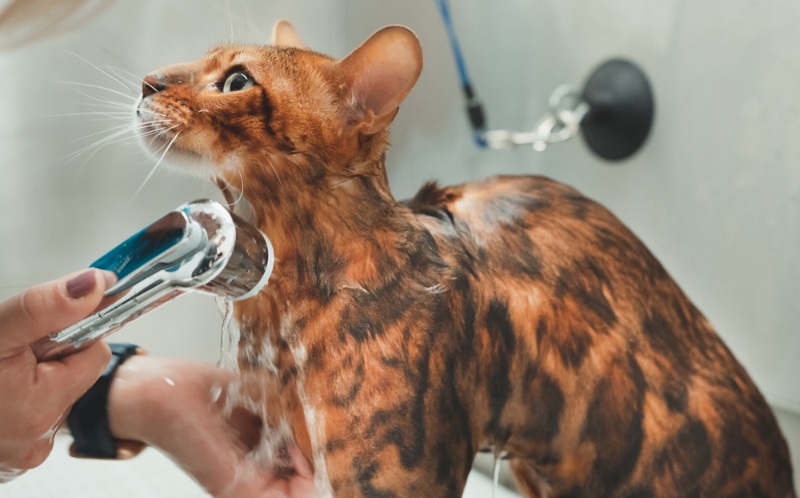Excited Cats advocates for adopting before shopping, though we fully understand there are many reasons for seeking a breeder. So, we encourage it to be done the right way. We have not personally visited or investigated all of the breeders below. We have put the top-recommended all in one place for you to get in touch and make the best decision for you. Learn more about our stance and how to choose the right breeder here.
Being a purebred cat, it is less likely you’ll find a Persian in an animal shelter, especially not a kitten. If your heart is set on raising a Persian kitten from its first few months of life, then you’ll likely need to go through a breeder, especially if you want to ensure the health of your new friend.
If you live in or near the state of Georgia, the good news is that you should have no trouble finding a reputable breeder of Persian kittens. And, the breeders are spread pretty evenly throughout the state, including a couple in the Atlanta metropolitan area if you’re flying in, so you shouldn’t have to travel too far to find one.

The 4 Persian Kitten Breeders in Georgia
1. Alchemist Silver and Golden Persians

- Atlanta, GA
Alchemist Cattery is Cat Fanciers’ Association (CFA)-registered and has received the Cattery of Excellence designation from the CFA. This cattery specializes in silver, gold, blue silver, and blue gold Persian cats. The home in which these kittens are raised before going to their forever home is inspected by veterinarians to make sure that it is safe and suitable for breeding happy and healthy cats.
This breeder also makes sure to answer any questions you may have under the “Kitten Info” tab on their website, including incredibly detailed information about the characteristics of Persian kittens and everything you need to know about bringing your new kitten home.
2. Royal Kittys

- Atlanta, GA
Royal Kittys specializes in Himalayan Persian cats and kittens. They are CFA-registered and are a small cattery, so only two to three litters are produced a year. That means that you may have to wait a while to get your Persian kitten, but you can be assured that the breeders have the time to devote to the proper care of each kitten in the litter.
By visiting their page, you can view a full breed history of the Himalayan Persian cat, complete with colors and patterns, personality, and any special care you need to know about. And if you don’t necessarily want a kitten and don’t intend on breeding yourself, they also adopt out their “retired” adult cats. This gives you the opportunity to give an older cat a loving home.
3. Purrrrfect Persians and Napoleon Munchkins
- Dublin, GA
Purrrrfect Persians and Napoleon Munchkins specializes in Doll Face Persian and Napoleon Munchkin cats in over 10 different colors and color points. This cattery has been in business for about 7 years and each kitten is raised in a loving home and never kept in cages. Their website suggests that the bloodline from which the kittens come from are free from Feline AIDS as well as Polycystic Kidney Disease, a common condition that affects Persian cats. But as verification of this, each kitten comes with a health certification in addition to proof of any age-appropriate vaccines.
What’s unique about this breeder is that when you pick up your kitten, you are also given a care package. Any information you need about caring for your Persian kitten is listed on their site, along with tips about how to properly introduce your kitten to other animals in your household.
4. Glamoure Persians

- Hartwell, GA
Glamoure Persians is Cat Fanciers’ Association-certified and exclusively breeds silver, golden, blue silver, and blue golden Persian cats. Their kittens are played with and held every day in order to build proper social and adaptation skills. They don’t go to their new home until they are between 12 and 16 weeks old to ensure that they are prepared to go to a new home.
A lot of these kittens come from a bloodline of Champion and Grand Champion show winners, so you can be sure that you are getting a beautiful kitten that is well taken care of. In addition, these kittens are great for families with children. You can also view all of the parent cats on the website, along with videos and pictures of some of their previous kittens.
You might be interested in:
Featured Image Credit: Linn Currie, Shutterstock










